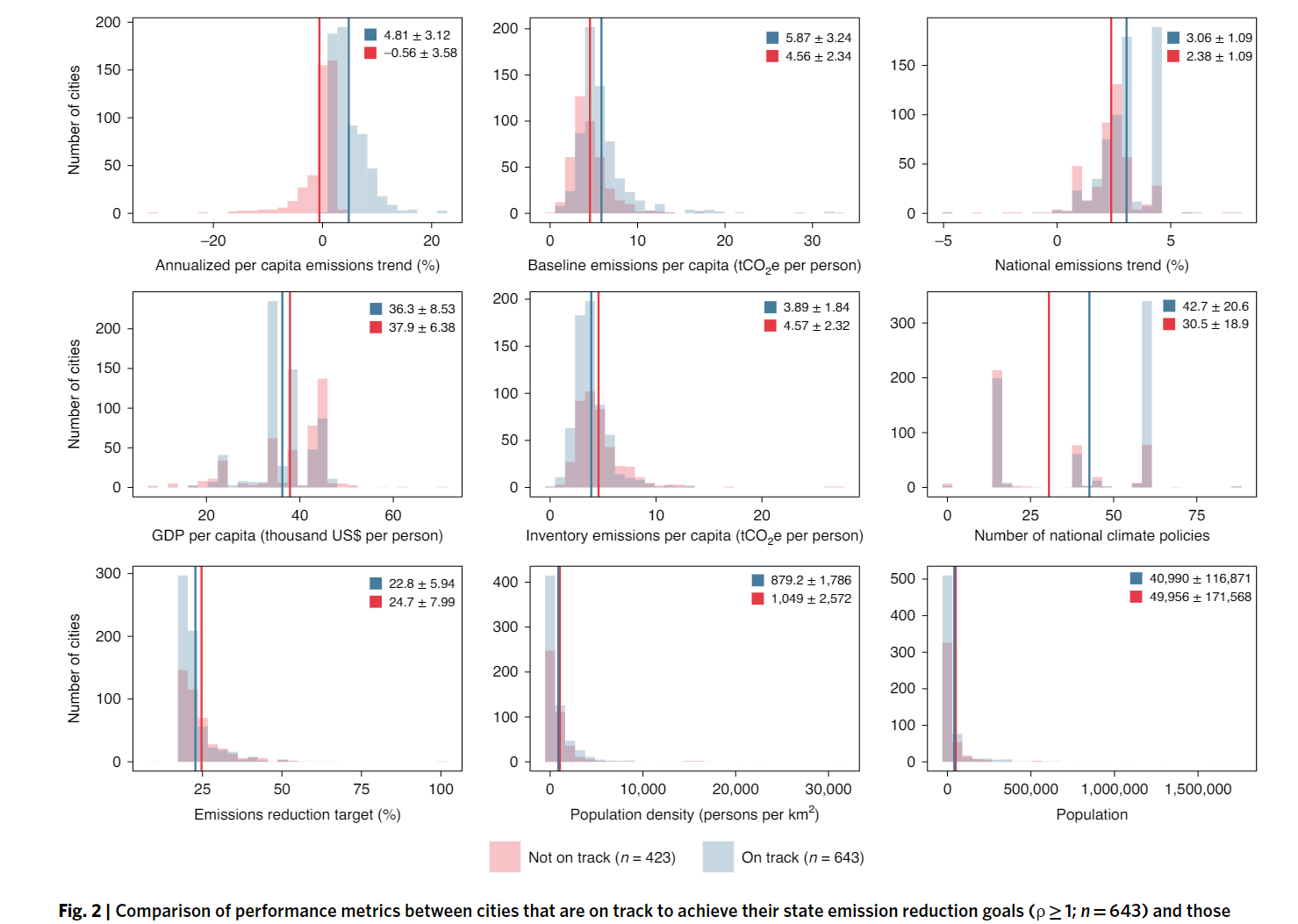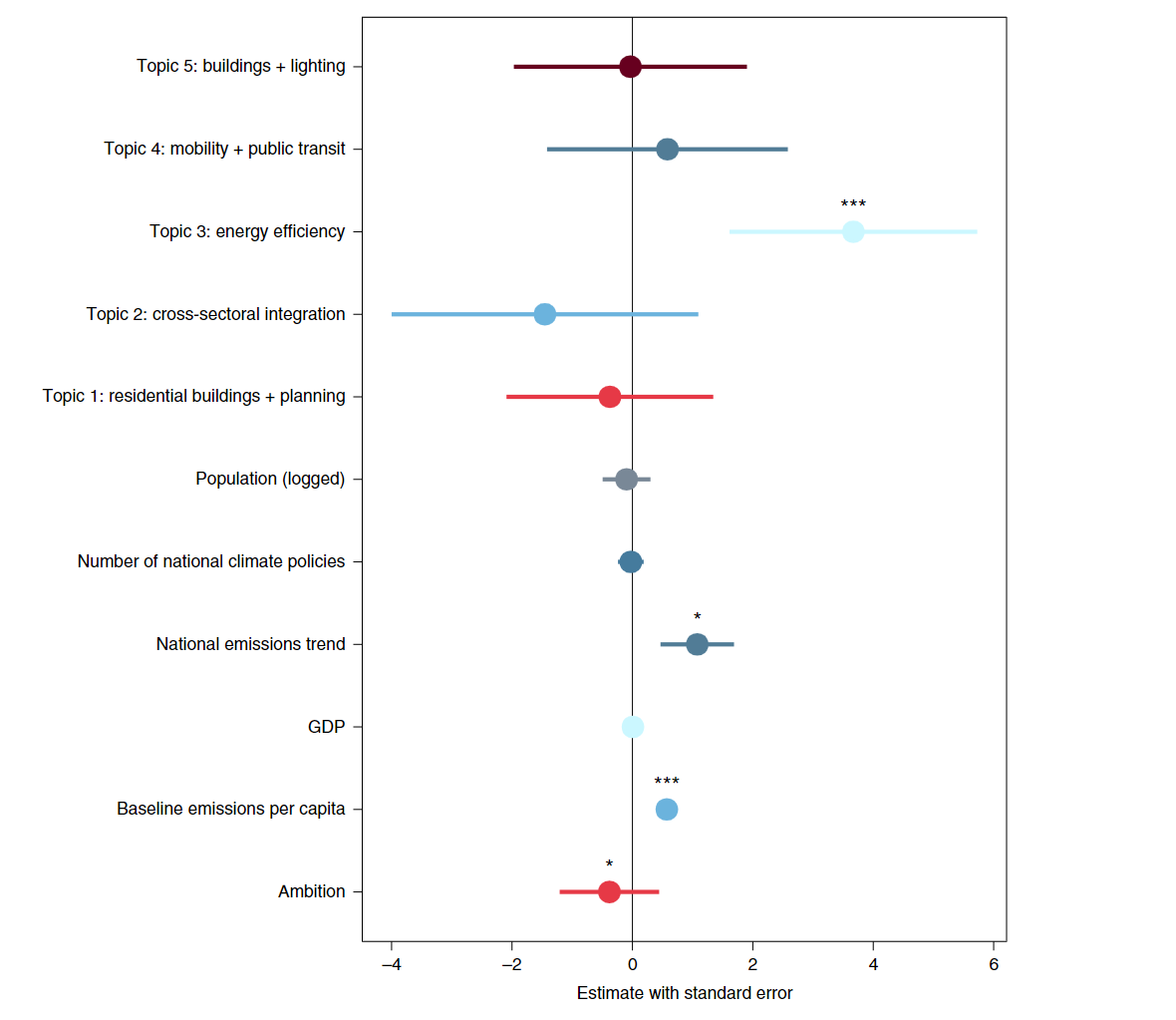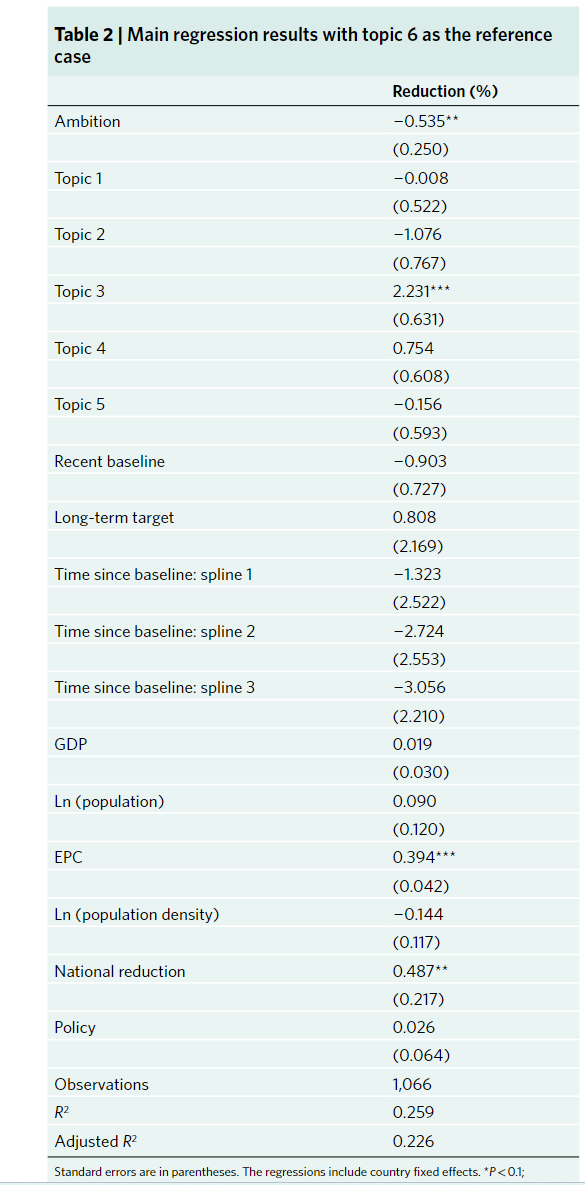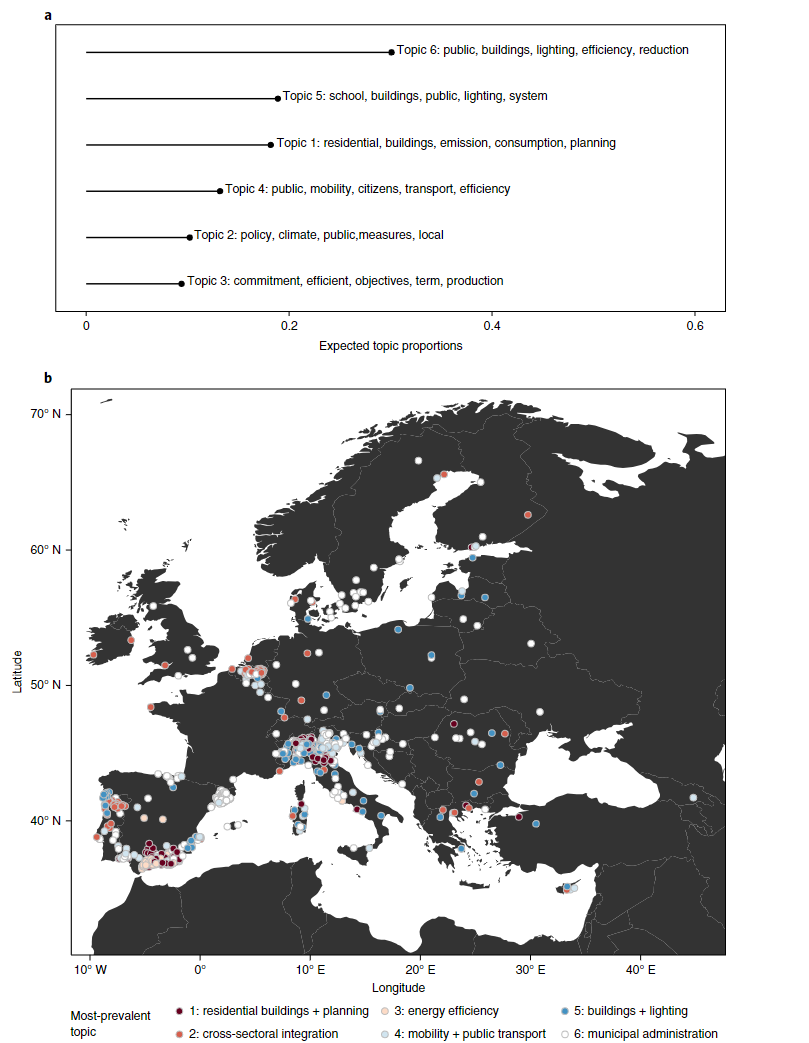Objective:
- In achiving reductions, the underlying drivers, whether policy or efficiency improvements could not be distinguished
Case:
Methodology:
- Reduction for cities: $reduction_{irc} = \lambda + \alpha plan +\beta city + \delta country + \gamma_c + \epsilon_i$
- STM: Topic modeling
- Carbon emission: EUCoM
- Population: World Bank
- GDP: OECD
Findings:
- The largest emissions sectors are transport, residential and industry

- 60% of the evaluated cities are on track to achieving their 2020 emission reduction goal assuming a linear projection
- Compared to not on track cities, on track cities have slightly higher per capita baseline emissions, lower inventory emissions
- 42% of the evaluated cities committed to emissions reduction targets that are considered ambitious

- The ambition of a climate change commitment is negatively associated with GHG emission reduction
- Six major thematic areas of climate policy: residential buildings and urban planning measures, cross-sectoral integration, energy efficiency actions, mobility and public transport, buildings and public lighting, municipal administration
- 10% increase in energy effciency is associated with an increase of 0.22 % reduction in per capita emissions; higher impacts in cities with lesser GDP per capita and population



Coding Reference:





